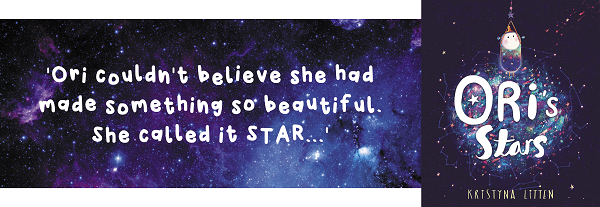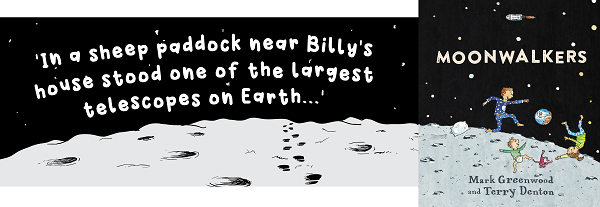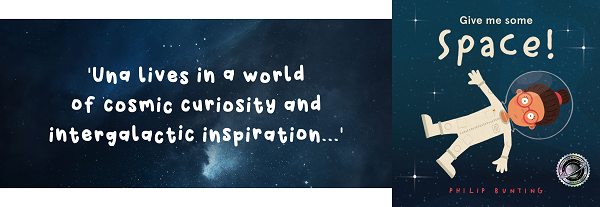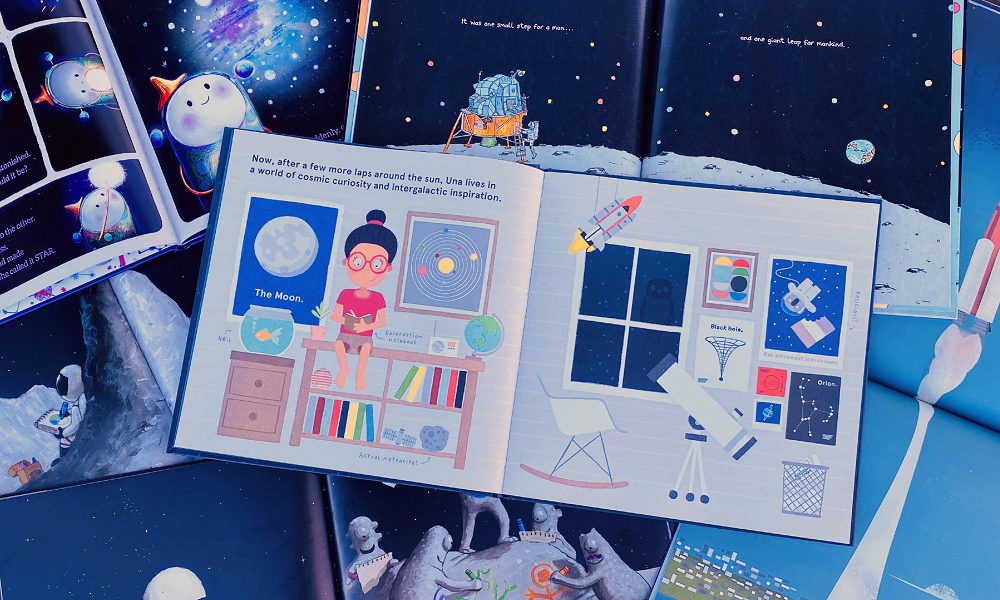Houston, we have a book blog!
Welcome to the MTA Book Blog, where I, Managing Editor and Bookworm-in-Residence here at MTA, will be checking in with you regularly to shine a light on one of the fantastic book packs that we’ve been busily curating just for you.
In case you hadn’t guessed the theme yet, this first post is going to be a celebration of all things space as we boldly explore our brand-new ‘Storytime in Space’ book pack, freshly launched (pun intended, I make no apologies) to get your little Earthlings excited about space in the run-up to this year’s out-of-this-world National Simultaneous Storytime – more on that later.
The ‘Storytime in Space’ book pack contains five incredible picture books that are guaranteed to captivate and inspire your students, so grab a bowl of astronaut ice-cream, rug up under a space blanket and relax as we blast off on a journey of discovery from the birth of the cosmos to the Moon landings and Mars exploration, and we may even meet a few extraterrestrials along the way…
‘Ori’s Stars’ by Kristyna Litten
We begin, of course, at the beginning. The very beginning. In the dazzlingly beautiful ‘Ori’s Stars’, author and illustrator Kristyna Litten takes us on a hypnotising journey through the birth of the stars. The book opens with a single lonely entity, Ori, who accidentally creates a strange shimmering ball that attracts more and more beings just like her. Before long, Ori and her starry-eyed friends are joyfully illuminating the vast darkness with their newly formed creations, until Ori comes to a realisation.
‘We need to show EVERYONE how to make stars. If we fill the sky, no one will EVER be alone in the dark again.’
A stunning story of the power of invention, friendship and sharing, ‘Ori’s Stars’ beautifully demonstrates not only that we all have unique gifts to offer the world, but, more importantly, that the power of these gifts multiplies infinitely when we share them with others.
‘Moonwalkers’ by Mark Greenwood and Terry Denton
A hop, skip and one giant leap forward around 13.8 billion years and we find ourselves in a sheep paddock in Parkes, New South Wales. It’s 1969, and Billy, like everyone else on Earth at that time, is gazing skywards, captivated by the impending Moon landing. In the shadow of The Dish, Billy and his siblings read books about space, make models of Apollo 11 and role-play being astronauts until well past their bedtime, and as they slip ‘softly, silently, safely into astronaut dreams’, up on the Moon, the Eagle has landed…
‘Moonwalkers’, by Aussie author and illustrator duo Mark Greenwood and Terry Denton, takes a uniquely Australian look at this monumental moment in the history of our planet and celebrates Australia’s crucial but oft-overlooked role in it. Bursting with fun illustrations and relatable characters, this book also boasts an abundance of fiction and non-fiction text features – such as speech bubbles, fun facts, labelled illustrations and even a step-by-step procedural graphic at the end of the book detailing the stages of the Moon landing – making it an astronomically good example of a multimodal text that students will adore.
‘Field Trip to the Moon’ by John Hare
Next up, we take another giant leap, but this time it’s a leap of the imagination in ‘Field Trip to the Moon’ by illustrator John Hare. This gorgeously illustrated wordless picture book follows a futuristic class excursion to the Moon – a concept that will no doubt delight your students! As is often the case with excursions, however, things don’t quite go to plan, and when one student is accidentally left behind on the Moon, they soon find themselves having a close encounter with some curious locals.
The inimitable beauty of wordless picture books is that they are universally accessible regardless of reading or language level, as well as being entirely open to interpretation, a wonderfully liberating experience for students of all ages. Students can really engage their imaginations to conjure up what is happening in each scene, what the characters might be thinking or feeling, seeing, smelling and hearing. A follow-up activity that allows students to write their own text or dialogue to accompany the illustrations is sure to yield a whole spectrum of creative interpretations of this heart-warming story that ultimately shows us that, in this world and any other, there is far more that unites us than divides us.
‘Curiosity: The Story of a Mars Rover’ by Markus Motum
We’re back in the realms of reality now, although this incredible true story of the Curiosity rover may seem like the stuff of science fiction. ‘Curiosity: The Story of a Mars Rover’ by Markus Motum is told from the perspective of the rover itself, providing a brilliantly original and endearing voice to narrate this chapter in the history of space exploration.
‘Thanks to the curiosity of explorers, Neil Armstrong’s footprints are on the Moon. And now, my tyre tracks are being left on another planet. Perhaps one day soon, footprints from the next generation of explorers will join mine.’
In telling this fact-filled story as a first-person account through the eyes of Curiosity, the details of the rover’s creation and function and the realities of its day-to-day life on Mars are conveyed with a warmth that is rarely found in fact-driven texts. Not only will students immediately connect with Curiosity on a personal level, they will also be able to make a text-to-real-world connection with the Perseverance rover, which landed on Mars in February of this year. All being well, Perseverance and Curiosity will continue to beam extraordinary images and clues to the secrets of the universe back to Earth for a while yet, so our fascination with the Red Planet isn’t going anywhere anytime soon.
‘Give Me Some Space!’ by Philip Bunting
‘Give Me Some Space!’ by Aussie author and illustrator Philip Bunting follows astronaut-in-waiting, Una, as she embarks upon her mission into the Milky Way to find life in space, only to realise that what she’s been looking for might have been a little closer to home all along. It’s a fun-filled adventure that is sure to inspire the next generation of space explorers, but don’t just take my word for it…
In case you hadn’t heard (where have you been?), ‘Give Me Some Space!’ has been selected for this year’s National Simultaneous Storytime, and on May 19th will be read by astronaut Dr Shannon Walker from the International Space Station. That’s right, this year’s National Simultaneous Storytime will be coming to you live from space. Space.
Join Dr Walker for a truly unforgettable National Simultaneous Storytime by registering for free here: https://membership.alia.org.au/events/event/nss2021
And now, as I deploy the landing gear and we make our final descent, I would like to thank you for joining me on this journey through the ‘Storytime in Space’ book pack. Next time, we will be delving into a beautiful collection of picture books that reflect on the pandemic and the lived experience of lockdown with the empathy, sensitivity and lightness of touch that picture books capture so exquisitely.
But for now, I’m going to parachute out of here and get back to sniffing out exciting new books to bedeck your bookshelves and bedazzle your little bookworms.
Over and out.
About the Author
Emily Bruce is the Managing Editor at Modern Teaching Aids (although she prefers the term Grammar-Wrangler-in-Chief). She has worked in children’s publishing in the UK and Australia for over seven years and is passionate about finding the spark that ignites a lifelong love of literacy in the next generation of storytellers.

